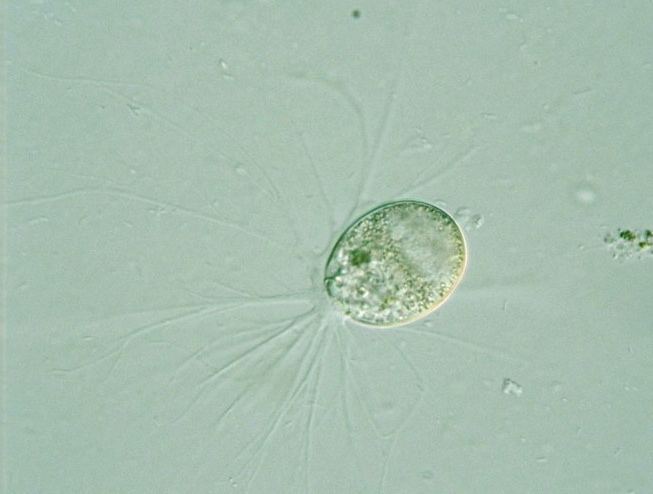Domain Eukaryota Scientific name Gromia Higher classification Gromiidae Order Gromiida | Family Gromiidae Rank Genus | |
 | ||
Similar Gromia sphaerica, Cercozoa, Cercomonadida, Imbricatea, Desmothoracid | ||
Gromia affitti fra privati
Gromia is a widespread genus of marine and freshwater amoeboids, closely resembling some foraminiferans. It produces an organic test, which is ovoid or lobed and may exceed one millimetre in size; this resembles a small grape, in that its centre is fluid-filled but lacks organic matter, which is concentrated in its translucent test and underlying sediment, making the organism almost neutrally buoyant. Filose pseudopods emerge from a single opening in the test. They branch and may merge again, but unlike the pseudopods of true foraminiferans they are not granular and rarely form a network. The life-cycle involves both asexual and sexual reproduction, and at certain stages motile cells with two flagella are produced.
Contents
On molecular trees Gromia is separated from other filose amoebae, which are mostly core Cercozoa, and appears between the Cercozoa and foraminifera. It may be placed as the closest living relative of the foraminiferans, but rapid genetic divergence between several groups makes this difficult to confirm.
Gromia can produce traces on the sea floor as it rolls around, which bear a resemblance to early trace fossils. These tracks are sinuous grooves, and are bordered by two squat, relatively wide ridges.
Gromia sphaerica is a large amoeboid discovered in the Arabian Sea.
